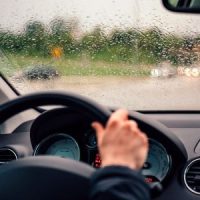The Role of Bad Weather in Car Accidents

When you were a kid learning to drive, you may remember your parents telling you to adjust your driving habits based on weather conditions. This wasn’t idle or pointless advice—your parents were just telling you what the statistics bear out.
The Statistics of Bad Weather
The United States Department of Transportation, in a study from 2007-2016, found that nearly a quarter of car accidents were affected by weather. When narrowing those accidents down to fatalities, weather played some role in about 16% of all accidents involving a death.
As you may imagine, rain was the main player in most weather-related accidents, but it wasn’t just falling rain. In fact, there is an argument that falling rain may be safer than when rain stops, leaving rain-soaked roadways; rain tends to slow people down and make them focus more on the roads.
After the rain stops, people often resume normal driving behaviors, despite wet roadways. This can lead to hydroplaning where the car’s tires lose traction with the road; there is almost nothing a driver can do when the wheels start hydroplaning, as the car’s slide cannot be controlled. Wet roads were the leading cause of weather-related accidents, according to the government study.
Flooding Dangers
Another danger that is common in areas that have canals and lakes, is rain flooded roads that “merge” with nearby bodies of water. In bad flooding, a driver may not be able to tell where a rain-flooded road ends, and where a canal or lake begins, leading drivers to simply drive directly into bodies of water.
Secondary Dangers
Weather can have secondary effects as well.
For example, while a strong wind is generally safe to drive in, it can blow objects onto the road that wouldn’t normally be there—and blow them there quickly, before a driver has time to react. Wind can cause a higher profile vehicle to lose control.
Weather can cause cars to stall in the middle of the road, or in places other drivers wouldn’t expect them to be.
Bad weather can also disable many of the technological features we have grown to depend on in our vehicles. Radar that tracks what is around us, or which handles cruise control or lane centering features, may disable.
Drivers From Different Regions
Often, the dangers of weather depend on geographic differences. Cars that travel from the south are not equipped to handle snow or ice covered roads, and those drivers may not even know how to safely navigate a road that has ice or snow on it. They may just follow the speed limit thinking it’s safe, not knowing that the speed limit is often unsafe in certain weather conditions.
Injured in a car accident because of weather? Another driver can still be liable for your injuries. Call the Knoxville personal injury attorneys at Fox Farley Willis & Burnette, PLLC, today for help.
Sources:
caranddriver.com/shopping-advice/a26311127/hydroplaning-definition-prevent-recovering/
caranddriver.com/shopping-advice/a26311127/hydroplaning-definition-prevent-recovering/
ops.fhwa.dot.gov/weather/q1_roadimpact.htm











